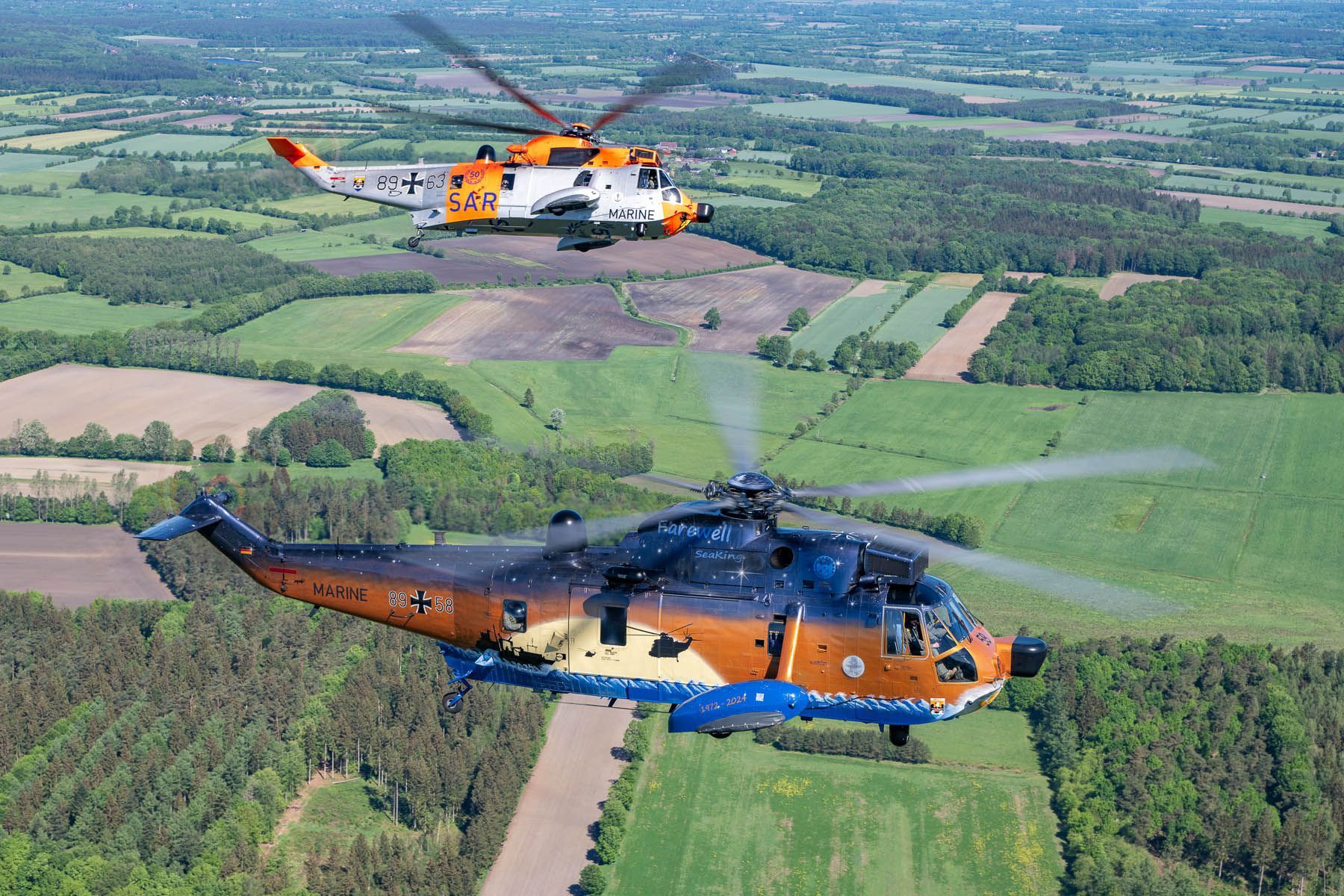On 31 August 2024, Marinefliegergeschwader 5 of the German Navy retired its last Westland Sea Kings after 51 years of search-and-rescue operations with these rugged and reliable helicopters. A great occasion to have a closer look at this aircraft and its operator.
Text and photos: Emiel Sloot
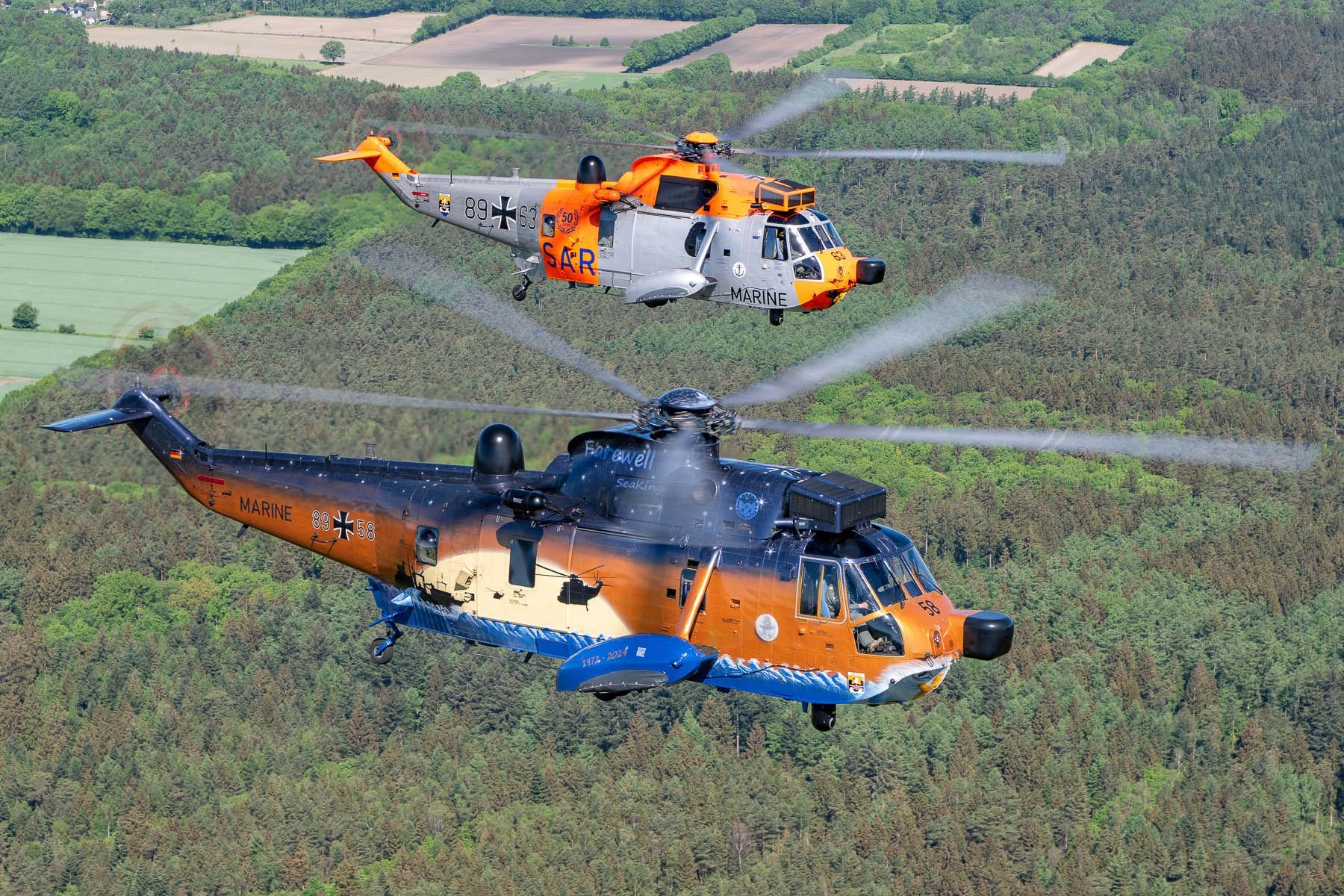
Acquisition and development
In the 1960s, the Sikorsky H-34G served with the West German Navy to conduct rotary wing SAR operations. Although these were regarded by their crews as highly reliable and easy to operate, a replacement with a significant larger capacity was sought for the single- and piston-engined H-34G. Initially, the Bell UH-1D was considered; this type was already about to enter service with the Luftwaffe and Heeresflieger (West German Air Force and Army Aviation). Eventually, the ‘Huey’ was rejected as it was deemed inadequate to replace all intended equipment – both the H-34 and the unit’s HU-16 Albatross planes. So instead of acquiring 27 UH-1Ds, the Marineflieger turned to British manufacturer Westland and ordered 22 Sea Kings on 20 June 1969.
The chosen Mk 41 variant was based on the HAS Mk 1 of the Royal Navy, which was mainly designed for anti-submarine warfare. Compared to this version, sonar gear was removed as search-and-rescue was to become the main task. Additional navigation equipment was added such as VOR, ILS, as well as a Decca Navigator Mk 19 display for long-range navigation. The cabin was stretched with 1.5m to create extra capacity for crew and passengers. With a crew of four (pilot, copilot, flight engineer and air operations officer) it offered space for up to 20 passengers. Power plants applied to the Sea King Mk 41 were two Rolls Royce Gnome H.1400-1 producing 1,660shp (1,240kW) each, and the fuel tank capacity was enlarged for greater endurance. Its lower fuselage allowed for landing on water in shallow conditions, although rescue operations were supposed to be carried out primarily with the help of a winch, operated by the flight engineer. The Mk 41 was the first export variant of the Westland Sea King and would later form the basis for follow-up customers, including the Mk 43 for Norway and the Belgian Mk 48.
The first two helicopters, serialled 89+50 and 89+51, made their maiden flight in 1972. Following successful trials, deliveries to Marinefliegergeschwader 5 commenced in 1973 and would be completed during the following year. One noteworthy incident took place on 16 January 1974, when Sea King 89+61 was damaged to such an extend during a test flight before delivery, that the airframe had to be written off. Nevertheless, it was still suitable for ground instructional purposes, so it was taken on charge as such with the naval technical school at Westerland on the island of Sylt. As a replacement, Westland built an extra helicopter that was delivered in April 1975, wearing the same serial number 89+61.

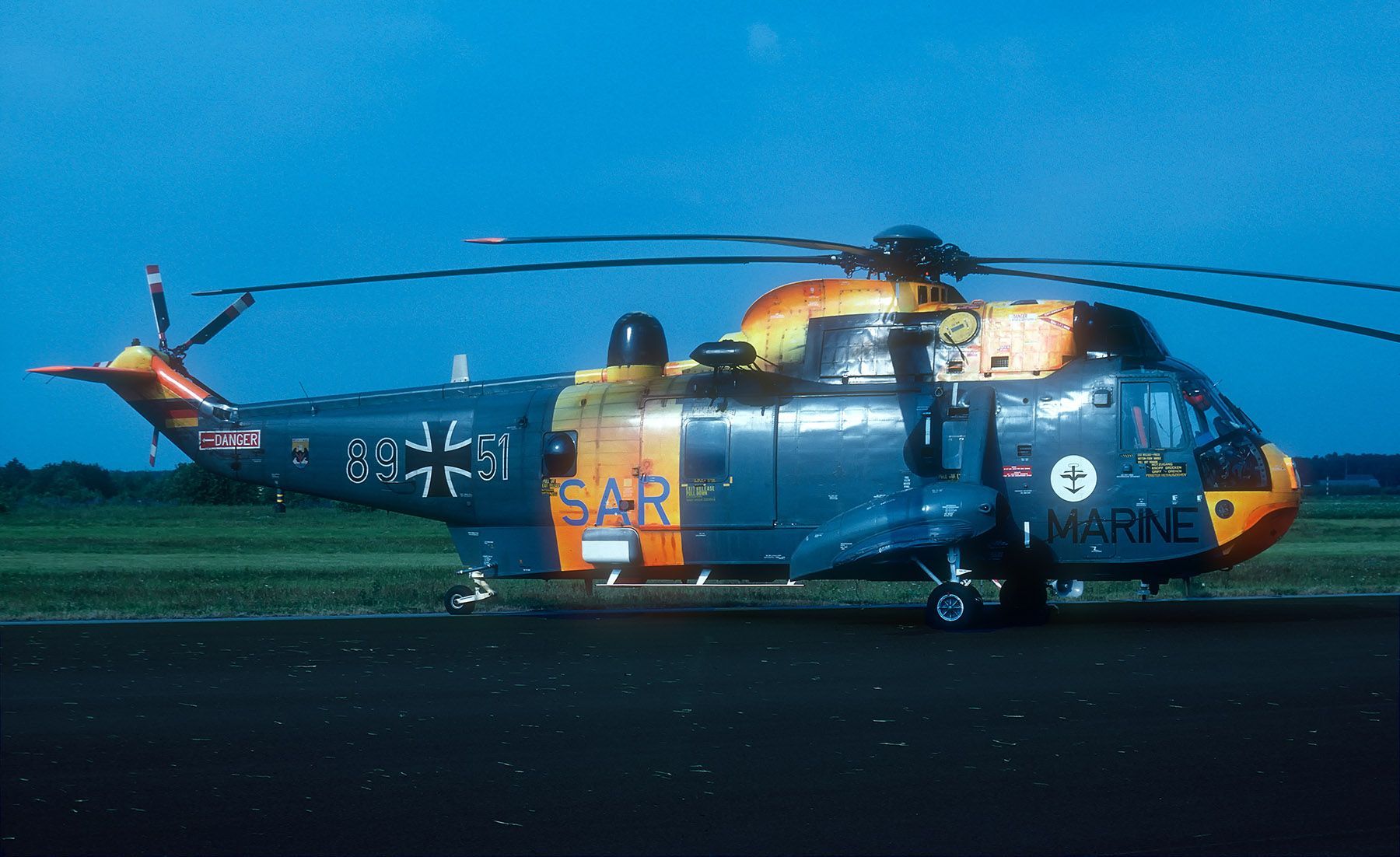
Geschwader history
Let’s leap back in time to see how MFG 5 was created. Due to international commitments that were also signed by West Germany, the country was responsible to offer rescue services over certain parts of the high seas. For this very purpose, the ‘Marine Seenotstaffel’ (naval rescue squadron) was established on 4 January 1958. Half a year later, on 1 July, the squadron became operational at Kiel-Holtenau. First equipment consisted of Bristol Sycamore Mk 52 helicopters, later that year augmented by four Saunders-Roe Skeeter Mk 51. The latter were quickly disposed of in Spring 1960 and replaced with additional Sycamores.
Soon, the rescue unit also initiated fixed wing operations with Percival Pembroke C.54, Dornier Do 27A and -B and Grumman HU-16B Albatross amphibious aircraft. The expansion of the unit resulted it to become the Marine Dienst- und Seenotgruppe (group) on 1 August 1959, and later the Marine Dienst- und Seenotgeschwader (wing). In 1963, the naval service and rescue wing received new Sikorsky H-34G helicopters to replace the Sycamores and on 25 October that same year, the unit was redesignated Marinefliegergeschwader 5, as it is still known today.
Around the same time the H-34G made place for the Sea King, all fixed wing types in service were replaced by 20 Dornier Do 28D-2 Skyservant aircraft. Two of these were later converted to Do 28D-2(OU) oil pollution scanners. In September 1994, with the withdrawal of the fleet of regular Skyservants, this pair was transferred to MFG 3 at Nordholz together with the wing’s Dornier Do 228LM aircraft. This left MFG 5 as a pure rotary wing unit.
Between June and November 2012, MFG 5 also moved to Nordholz as a result of the ‘Neuausrichting der Bundeswehr,’ a large armed forced reorganisation programme. The last Sea King left Kiel-Holtenau on 6 November 2012 and the base was subsequently closed officially on 28 March 2013. Following the move to Nordholz, MFG 5 became the Marineflieger’s dedicated helicopter unit as the Sea Lynx squadron of MFG 3 became the third Staffel of MFG 5.
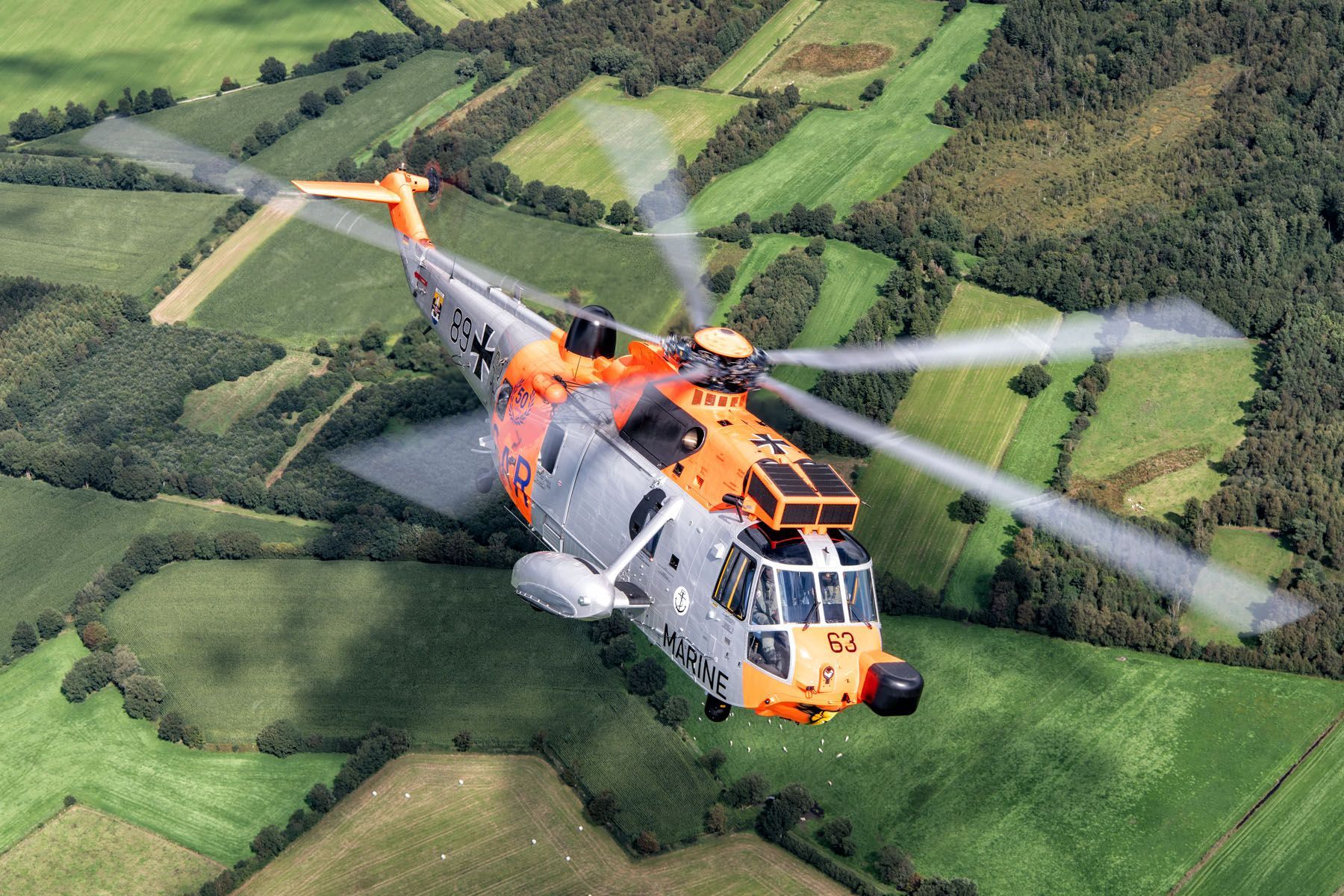
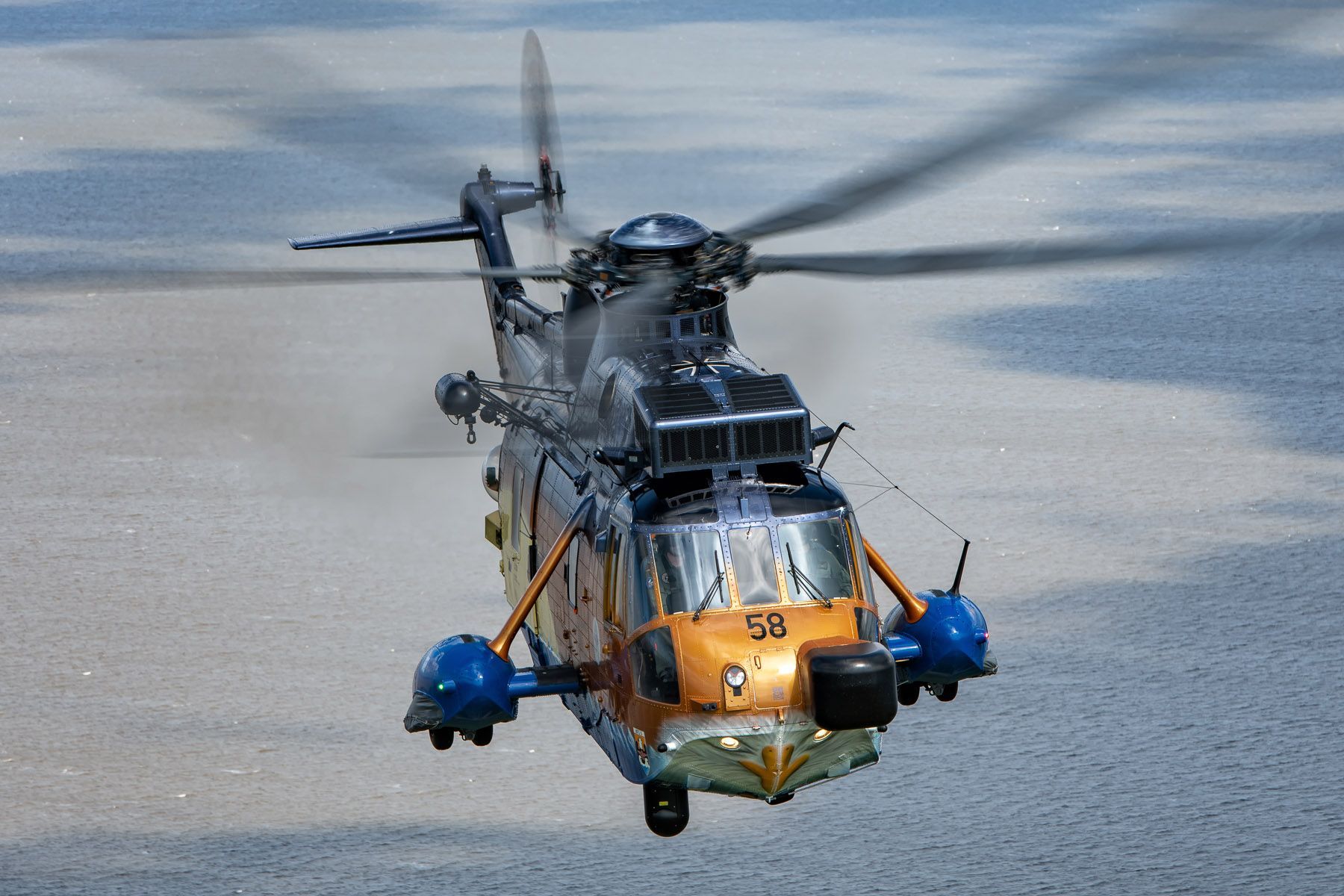
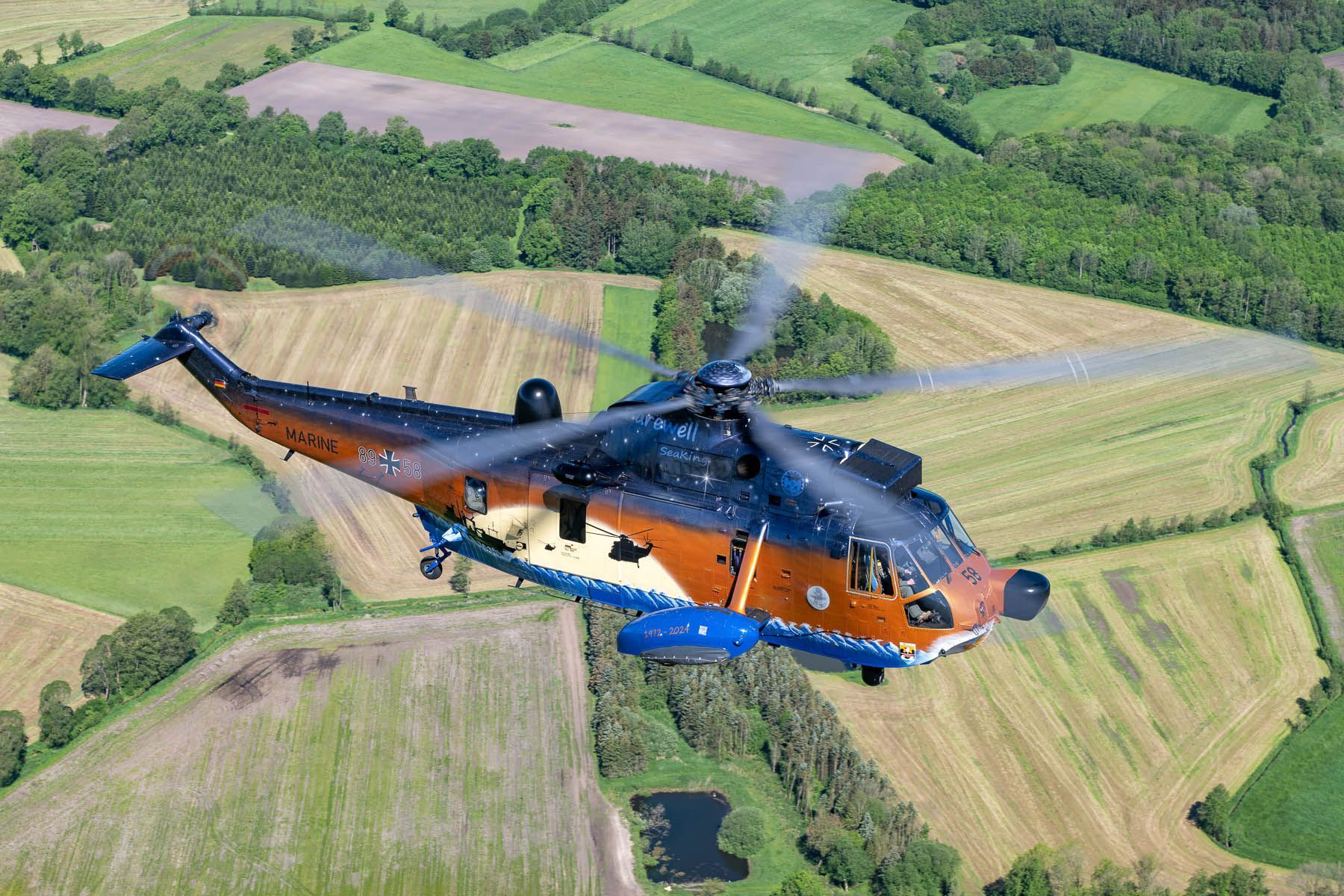
Sea King upgrades
Back to the Sea King. While search-and-rescue is its main role, the Sea King carries out other tasks as well, including air transport, disaster relief missions, and naval support.
To keep the systems up-to-date, an upgrade programme was initiated in 1987. This included installation of a Ferranti Seaspray 3000 radar, an AN/ALR-68 radar warning receiver and the AN/ALE-37 chaff/flare system for self protection. A forward-looking infrared (FLIR) camera assists in the search and rescue effort. The Seaspray radar allows to deploy the Sea Skua missile against surface vessels. Fire support is available by a 12.7mm M3M machine gun, that can be fitted into the door opening on the starboard side.
But as mentioned, sea rescue from the air has always been the core business. A Rescue Coordination Centre is located in Glücksburg near the Danish border. From this location, crews are directed towards the operating areas. MFG 5 maintains detachments on the islands of Heligoland and Borkum to cover the North Sea including the German Bight, as well as at Warnemünde-Hohe Düne for operations over the Baltic Sea.
Sea Kings are also able to operate from certain German Navy vessels, mainly for transport and reconnaissance, or missions in support of Special Operations Forces. The Type 702 Berlin-Class replenishment ships Berlin (A1411), Frankfurt am Main (A1412) and Bonn (A1413) are each able to house up to two Sea Kings. In May 2022, two Sea Kings operated from the Zr.Ms. Rotterdam (L800), a Royal Netherlands Navy amphibious transport vessel, during exercise ‘Schneller Adler.’ This exercise focused on the training to evacuate both troops and civilians in a crisis scenario. It was the first time two Sea Kings operated simultaneously from a single deck.
While Germany saw a few national disasters caused by nature, Sea Kings were called upon for relief missions. These include action following massive snowfall such as in Schleswig-Holstein in 1978/79 and at Rügen and Hiddensee in 2010. Floods in the Oder region in 1997, the Elbe in 2002 and both the Elbe and Donau rivers in 2013 also prompted MFG 5 to action. Rescue missions were not limited within the German borders. In 2004/05, an international relief operation was carried out in Indonesia following the tsunami disaster.

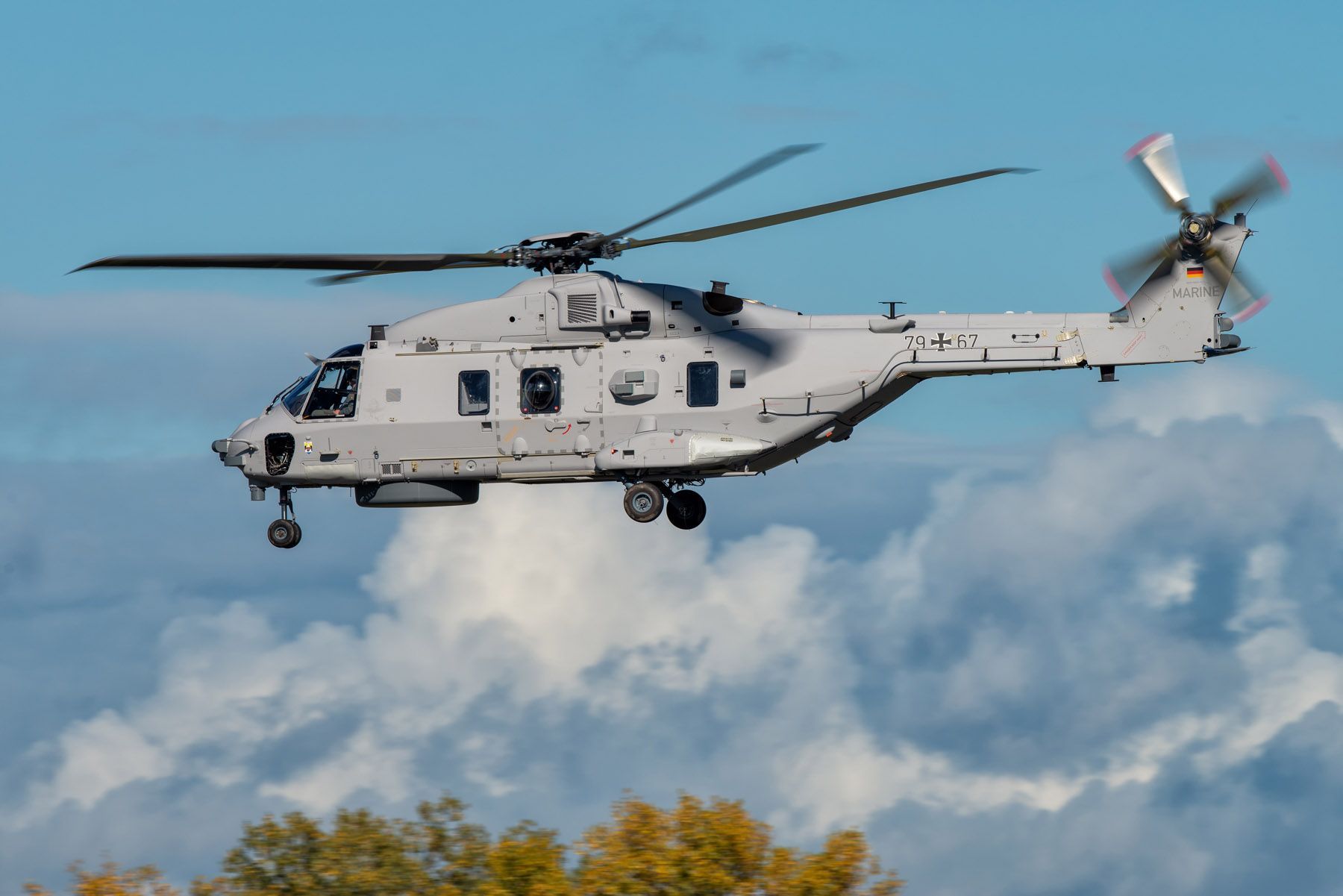
NH90 takes over
Although the NHIndustries NH90 was foreseen to have replaced the Sea King many years ago, an order for 18 NH90-NTH Sea Lion helicopters was not confirmed until 2013. Production formally commenced in December 2015 and the Sea Lion made its first flight on 8 December 2016.
Following extensive trials, the first Sea Lion was handed over by Airbus Helicopters to the Bundesamt für Ausrüstung, Informationstechnik und Nutzung der Bundeswehr (BAAINBw – federal office for armed forces equipment, information technology and in-service support) on 24 October 2019. However, an extensive list of deficiencies was established, and therefore entry into operational service was denied, as reportedly, a safe operation could not be guaranteed.
After addressing its shortcomings, the first Sea Lion was finally delivered to Nordholz late 2020
while the last was delivered on 26 January 2023.
On 24 October 2023, Sea Lions were engaged for the first time in an actual SAR engagement over the North Sea alongside two Sea Kings. The NH90 proved to be a useful platform, as its higher speed compared to the Sea King enabled the crew to arrive in the operating area faster, while the autopilot performed well and stable in rough weather conditions.
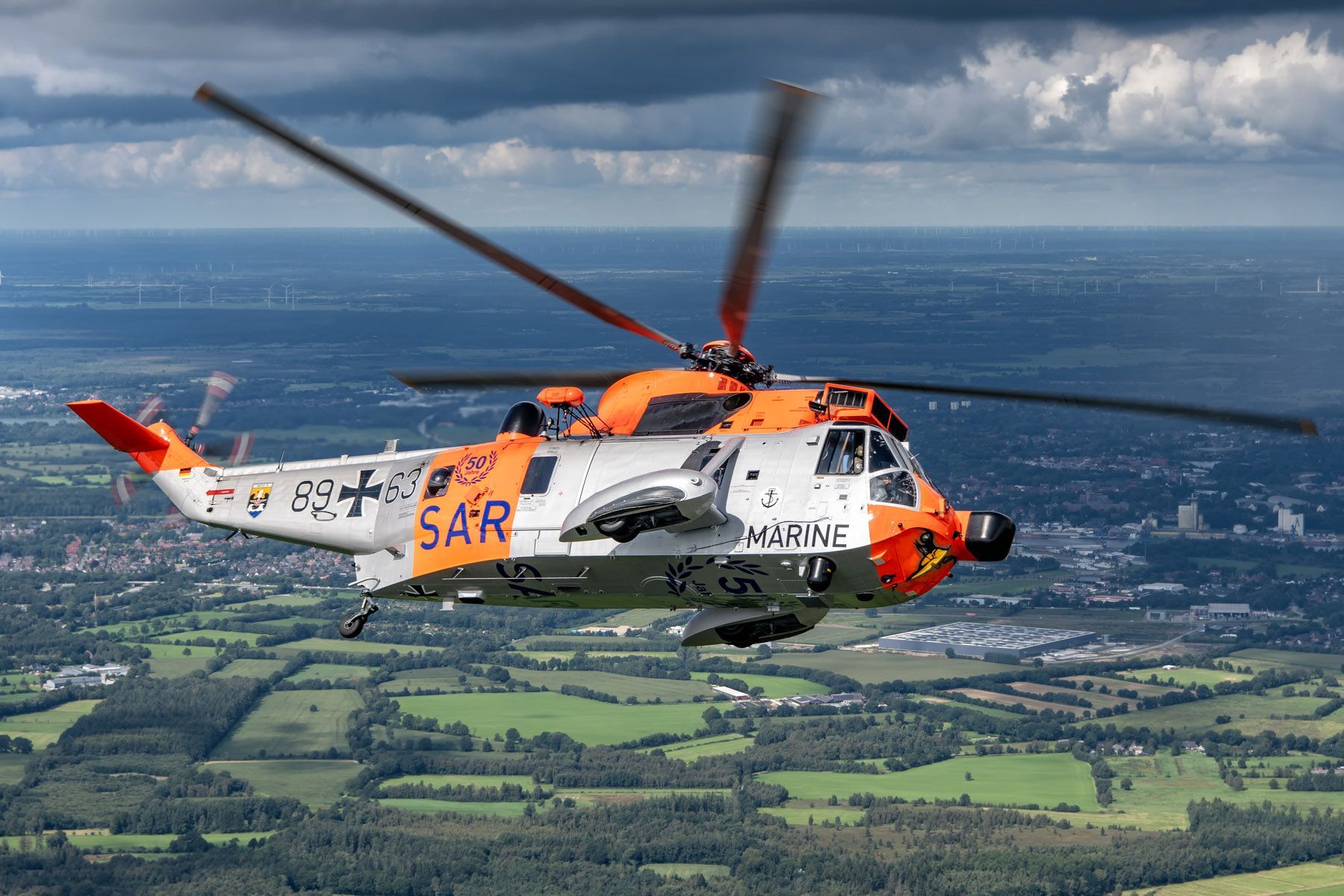

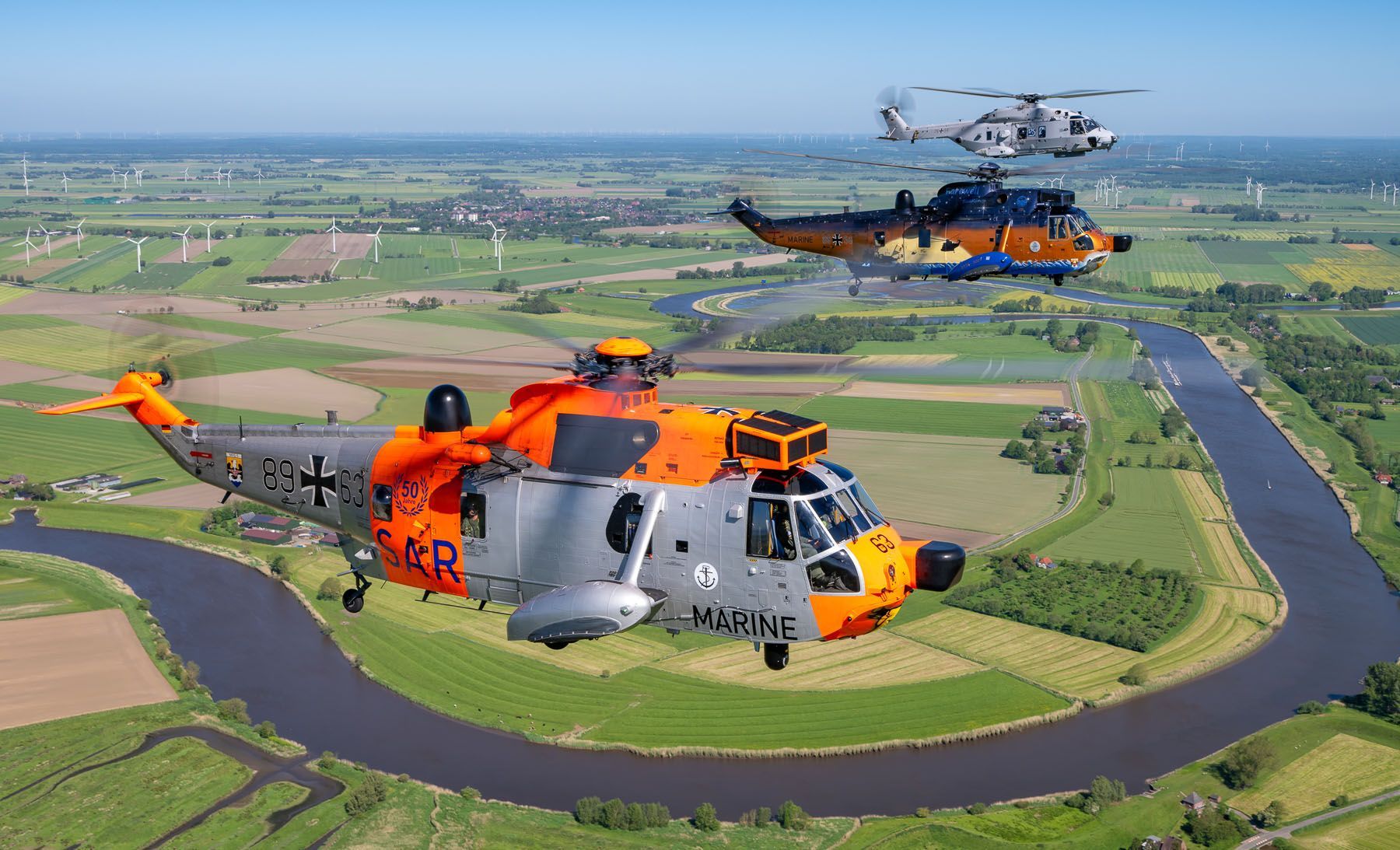
The Sea King's last days
The first Sea King that was delivered originally (89+50) made its final flight on 9 August 2023, and by the end of that year, only some eight Sea Kings were still operational.
On 23 January 2024, defence minister Boris Pistorius announced that Germany would donate six Sea Kings to Ukraine. A package of spares and additional material such as winches, SAR equipment and ballistic protection would be included. Soon after the announcement, the first Sea King was flown from Nordholz to Portsmouth, UK as the donations would receive an overhaul with Fleetlands first. Following delivery to the new operator, the Mk 41s join three Sea Kings that were donated in 2022 by the United Kingdom.
To mark the end, Sea King 89+58 received a special colour scheme early 2024. On 5 August, 89+55 (in regular grey colours) was flown to the Bundeswehr Military History Museum at Gatow near Berlin. One day later, the fifth of six Sea King to be donated to Ukraine (89+66) was flown to the UK, leaving just the specially coloured helicopters (89+58 and the 'retro' 89+63) for the retirement ceremony. After several demonstrations for an audience of active and former Sea King personnel, the engines were shut down on 31 August 2024, ending an impressive career with the German Navy. While 89+63 will be preserved locally, 89+58's special outfit is removed as this one is the sixth and final to move to Ukraine via the UK.
During 51 years of service, 349 crew members have flown the Sea King, of which 199 pilots, 88 air operations officers and 62 flight engineers. Some 14.645 SAR missions were completed. ■
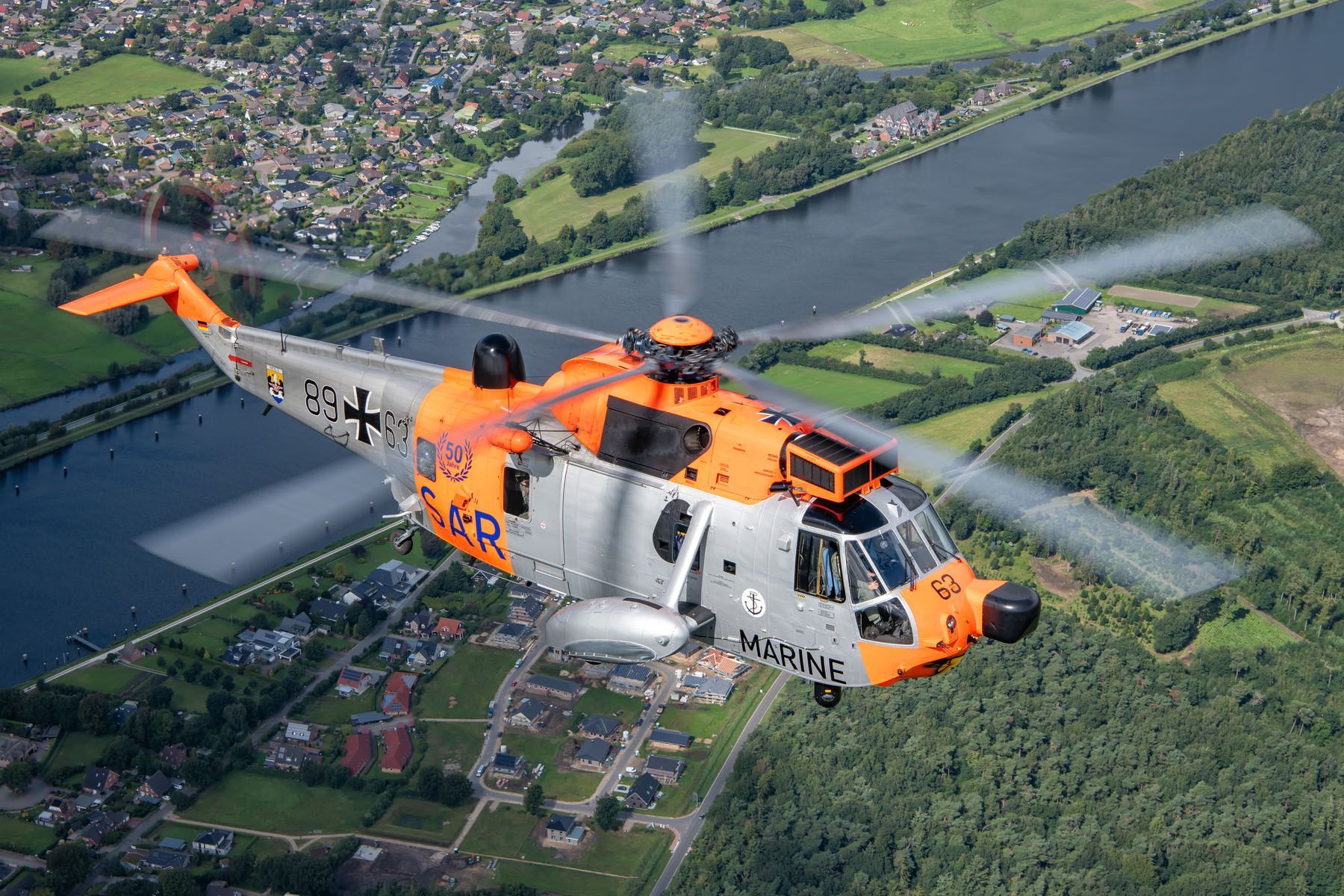
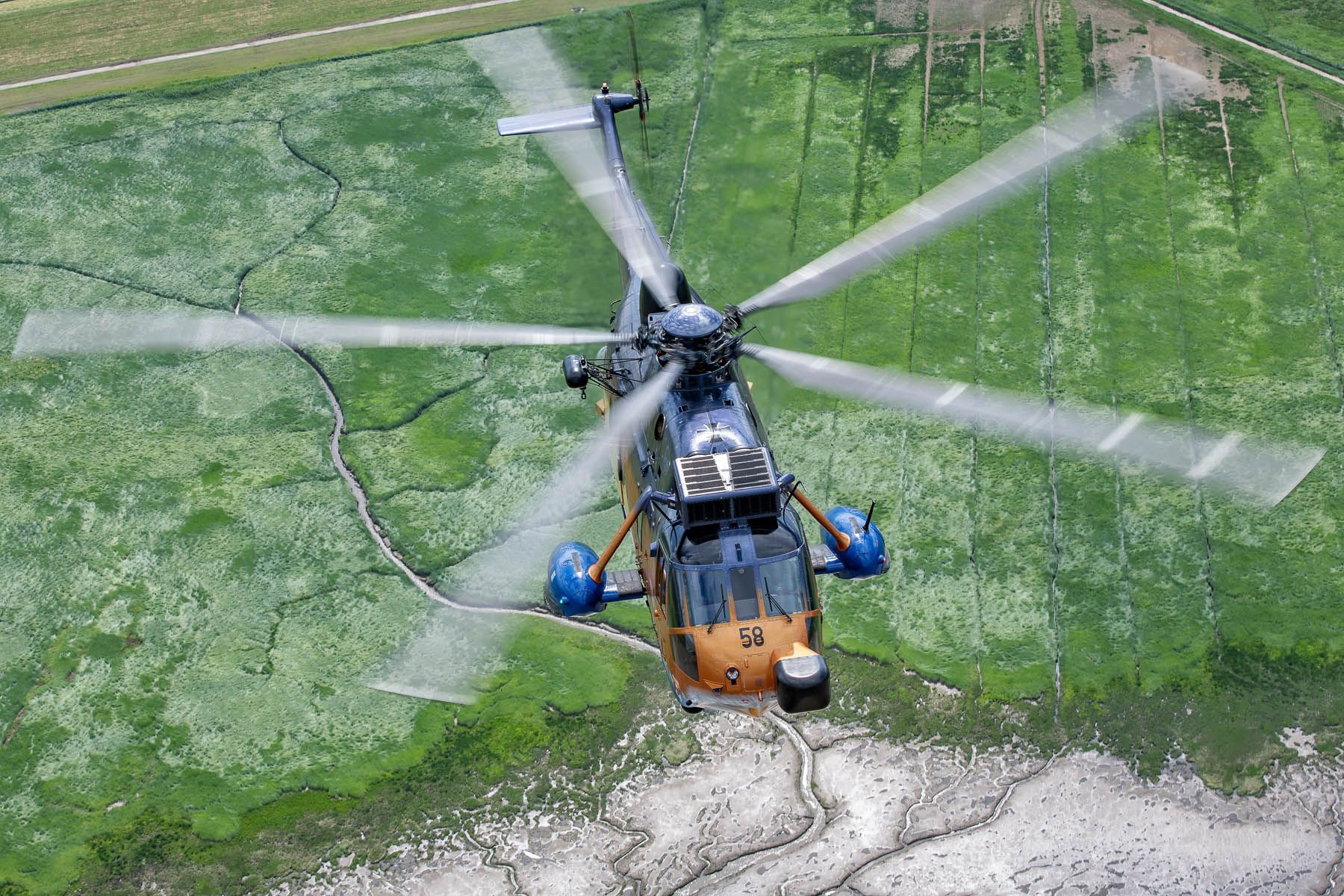
A few details on the Sea King Mk 41 fleet
Westland built 22 Sea King Mk 41s with construction numbers WA744 to WA745 and WA756 to WA775. These were serialled 89+50 to 89+71. As WA765 was damaged and written off before delivery, WA830 was handed over as replacement, again receiving serial 89+61. Still, WA765 was also delivered in the end, but only to act as ground instructional airframe.
In German service, only one was written off in an accident, and it occurred in a peculiar way. After 89+59 had stranded at Heligoland following damage to the main gearbox, it appeared that repair at its home base was required. On 17 November 1998, a CH-53G of the Heeresflieger (army aviation) airlifted the Sea King having its rotor blades detached to the mainland. However, as the crippled helicopter started to move violently, the CH-53G crew had no choice to ditch the Sea King into the North Sea to prevent both helicopters from crashing.
Two can still be seen as a monument: 89+55 at the Militärhistorisches Museum der Bundeswehr at Berlin-Galow, and 89+63 with the Aeronauticum collection at Nordholz. ■
